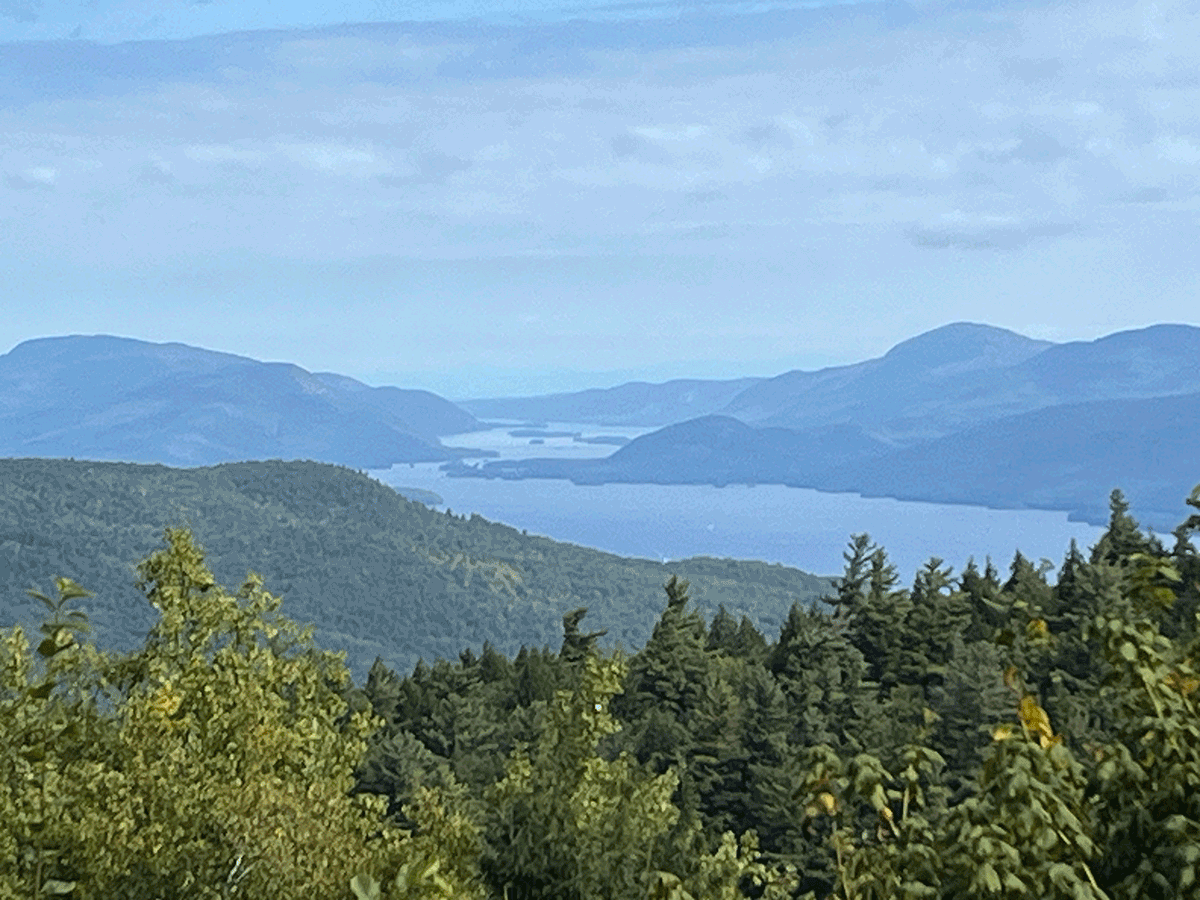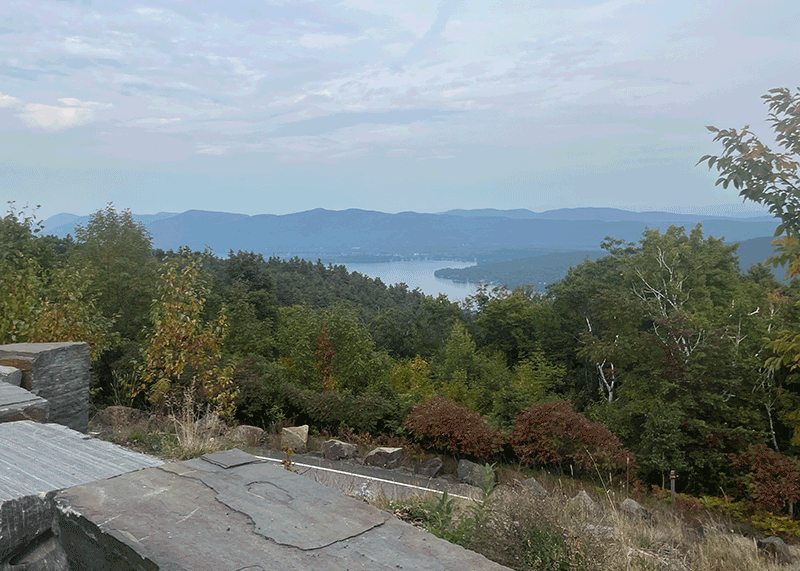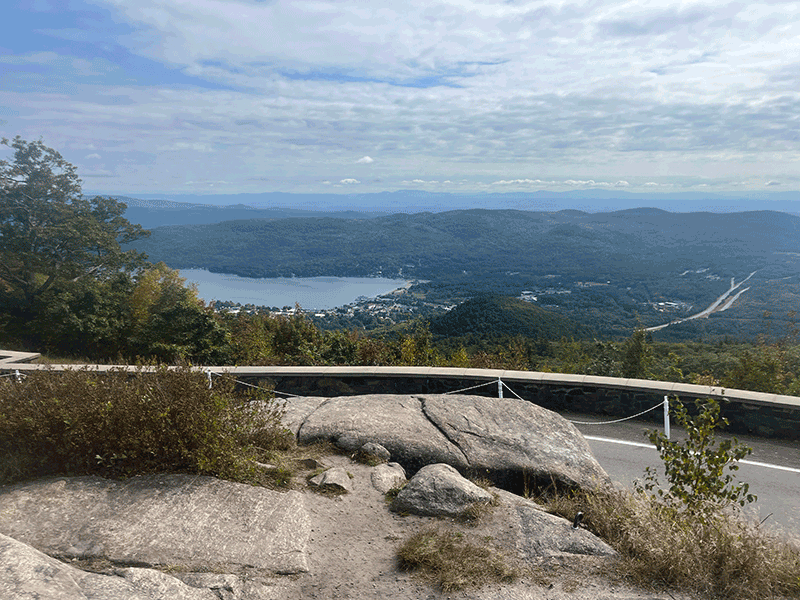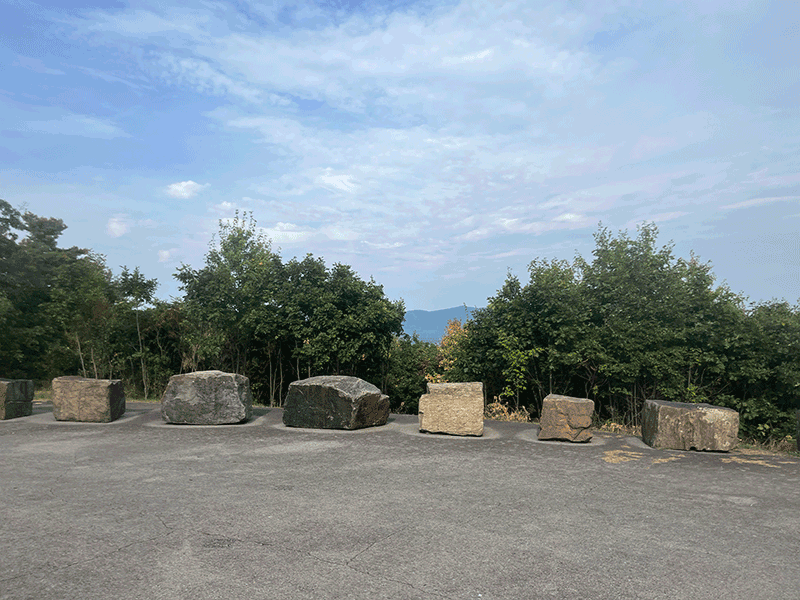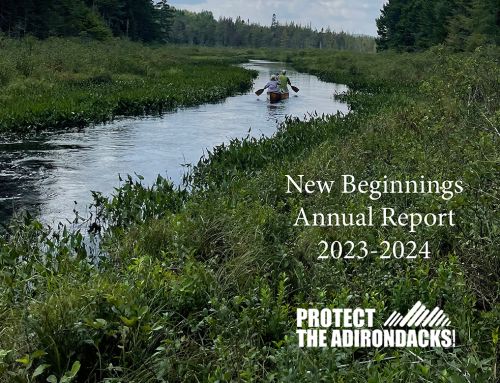DEC Needs to Rescind Its Plan to Cut Trees on Prospect Mountain
The Department of Environmental Conservation (DEC) wants to cut 13,393 trees on the Prospect Mountain Veterans Memorial Highway and at the Day Use Area on the top of Prospect Mountain. DEC’s draft Work Plan, which was noticed in the September 4, 2024 Environmental Notice Bulletin, proposed cutting trees on Overlooks 1, 2, and 3 on the highway and more tree cutting on the north and south overlooks at the Summit on Prospect Mountain. Prospect Mountain is a highly visible and highly visited site that should be managed in a way that protects its special qualities as part of the Adirondack Forest Preserve. Prospect Mountain affords wonderful views of the lands to the north, east and south, including other Forest Preserve lands and of Lake George. The significant amount of tree cutting proposed by DEC is not necessary to give people views from the mountain.
We believe that the proposal to cut more than 13,000 trees will violate Article 14 of the New York State Constitution, the “forever wild” clause, and the Adirondack Park State Land Master Plan (APSLMP). We also believe that DEC should not be undertaking this significant work without an approved Unit Management Plan for the area. DEC has apparently failed to first consult with the Adirondack Park Agency before publicly proposing this action, both in apparent violation of DEC Commissioner Policy 78/Forest Preserve Work Plan Policy (CP-78). DEC needs to withdraw its proposed action and prepare a new proposal for managing the Prospect Mountain Veterans Memorial Highway Day Use Area.
Notably, there are other priority work items that we can envision, such as restoring, rerouting and repairing the extremely steep, rocky, and washed-out hiking trail that serves untold numbers of visitors from all over the world who are visiting the Lake George area, which may be their only experience hiking in the Adirondacks. We wrote to DEC asking that the department not carry out the proposed work until a thorough Unit Management Plan is completed for this area.
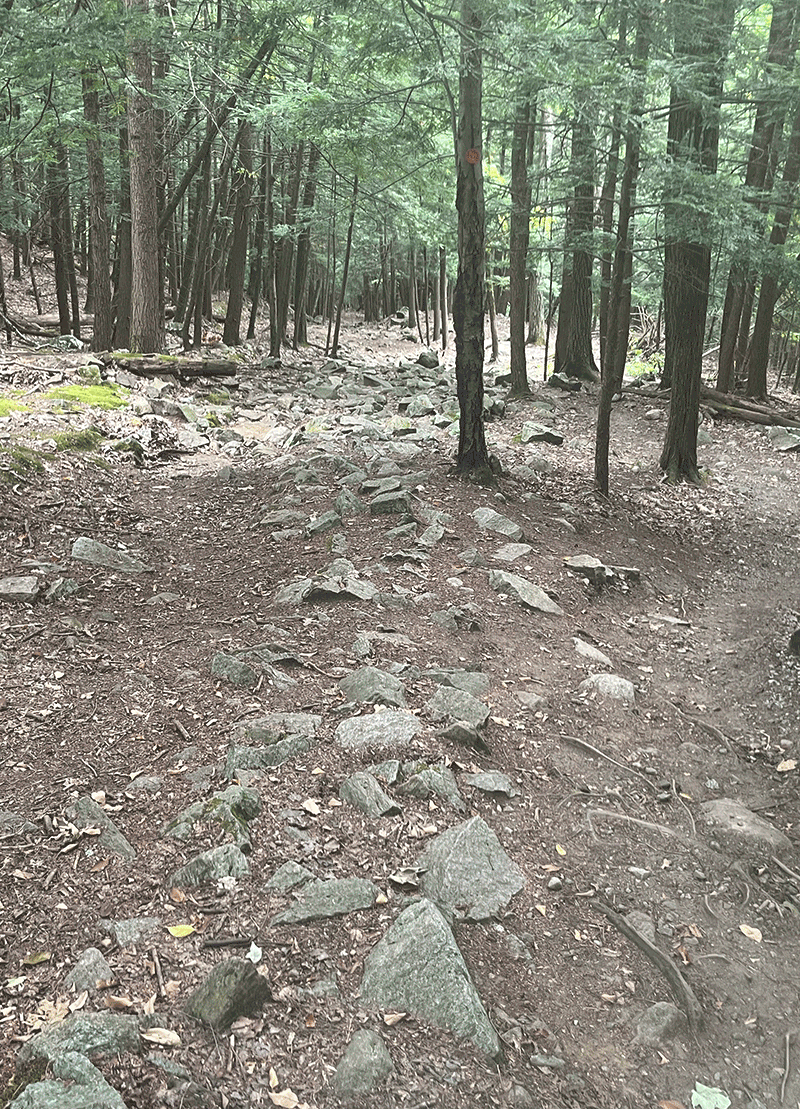
Extremely steep, rocky, and washed-out hiking trail from the Village of Lake George to the Summit of Prospect Mountain. Hikers are spreading out to hike along both sides of the “trail”.
Failure to Comply with the Adirondack Park State Land Master Plan
The Prospect Mountain Veterans Memorial Highway Day Use Area is classified as an Intensive Use area pursuant to the APSLMP. The Intensive Use classification requires that all management actions “blend with the Adirondack environment,” “have the minimum adverse impact possible on surrounding state lands,” and must “limit vegetative clearing.” Further, improvements in an Intensive Use Area must conform to “a final adopted unit management plan for such area”. Prospect Mountain Highway is not located in a designated “Highway Corridor” where scenic vistas may be permitted, and it is not located in a “Railroad Corridor” where scenic vistas are allowed pursuant to “an adopted unit management plan”.
To the contrary, the APSLMP prohibits the tree cutting that DEC is proposing. The proposed tree cutting does not “blend with the Adirondack environment,” “have the minimum adverse impact possible on surrounding state lands,” “limit vegetative clearing,” and does not conform to “a final adopted unit management plan for such area” as required by the APSLMP. Even though the State Legislature approved funds for the creation of the Prospect Mountain State Parkway in 1964, the provisions of the APSLMP are still in effect. Some may remember how visible the roadway was from points all over the area, and what a scar it created on the mountain, in the years after it was constructed and opened in 1969. DEC should not undertake work to emulate that negative impact on Prospect Mountain but that’s what the proposed cutting will do – open up large swaths of the highway to be visible from below.
Failure to Comply with Article 14 of the Constitution
It’s as if DEC has forgotten that it needs to comply with Article 14. DEC’s Work Plan contains no analysis of Article 14 compliance as required by DEC Commissioner’s Policy CP-78, which sets forth criteria that must be analyzed for determining compliance with the provisions of Article 14, the “Forever Wild Clause”. CP-78 requires DEC to evaluate constitutional compliance and to “document the detailed, site-specific assessments conducted by Regional Land and Facility Managers when siting a particular project to ensure that an analysis of the relevant constitutional, statutory, and regulatory factors have been considered.” DEC’s draft Work Plan does not document any analysis by DEC staff to ensure that the constitutional provisions have been considered, and more importantly, have been satisfied. In fact, our analysis of the criteria set forth in CP-78 makes it clear that DEC’s proposed tree cutting plan does not pass constitutional muster.
Criterion 1: Is the proposed cutting, removal, or destruction of timber “material or substantial”?
In this Work Plan, DEC proposes to cut 13,393 trees over 3.88 acres of land. In Association for Protection of Adirondacks v. MacDonald (253 NY 234 [1930]), the Court of Appeals held that the destruction of 2,500 trees over 4.5 acres for the 1932 Winter Olympics in Lake Placid was unconstitutional. In Protect the Adirondacks v. DEC (37 NY3d 73 [2021]), the Court of Appeals held that the destruction of 25,000 trees over 27 miles for Class II snowmobile trails was unconstitutional. The amount of tree cutting proposed for this project far exceeds the amount of tree cutting found to be unconstitutional in the 1930 case and approaches the level of tree cutting (in a smaller geographic area) found to be unconstitutional in the 2021 case. It’s our position that DEC’s proposed tree cutting proposed is “material or substantial” and is unconstitutional.
Criterion 2: Is the degree of alteration of the existing Forest Preserve terrain permissible?
The Work Plan does not describe any new terrain alteration. Therefore, we assume that DEC is not planning any terrain alteration as part of its tree cutting proposal.
Criterion 3: Do the impacts of the proposed project impair the wild forest nature of the Forest Preserve?
The proposal in the Work Plan does not preserve the “wild forest” setting and character of the Forest Preserve, and does not preserve the natural aesthetics associated with a Day Use Area in the Forest Preserve. The draft Work Plan fails to analyze the impact on the wild forest nature of the Forest Preserve, including the impacts of the tree cutting on the wild forest character of the Forest Preserve on Prospect Mountain and the impacts on the adjoining Forest Preserve lands constituting part of the Lake George Wild Forest, resulting from cutting 13,393 trees across five areas on the top of Prospect Mountain.
We also believe that the views of Prospect Mountain from the Village of Lake George, Beach Road, Lake George Beach (aka Million Dollar Beach), Lake George Battlefield Day Use Area, and the lake itself, would be adversely impacted. To our knowledge, DEC has not conducted any visual impact analysis of the proposed tree cutting on the views of Prospect Mountain from these highly visited areas. It is our position that the proposed action impairs the wild forest nature of the Forest Preserve.
Statutes Cannot Supersede Article 14 of the Constitution
DEC claims that state laws passed in the 1950s and 60s relating to Prospect Mountain direct DEC to carry out its tree cutting proposal. However, laws passed by the Legislature cannot supersede the Constitution. As history shows, in 1929, the Legislature passed a law purporting to authorize the then Conservation Commissioner to “construct and maintain, for the use and pleasure of the public, a bobsleigh run or slide . . . and to clear the land necessary therefor.” Association for Protection of Adirondacks v. MacDonald (228 AD3d 73 [3d Dept. 1930]). That law was challenged and the Appellate Division held that “the Legislature has no power” to sanction projects that violate the Constitution. Id. at 82. The Court of Appeals affirmed, holding that “chapter 417 of the Laws of 1929, permitting the erection of this bobsleigh slide and the destruction of trees is unconstitutional” and stating that “[t]rees could not be cut or the timber destroyed, even for the building of a road”. Association for Protection of Adirondacks v. MacDonald (253 NY 234, 240, 242 [1930]).
Likewise, trees cannot be cut on Prospect Mountain in violation of the Constitution because the laws of 1954 and 1964 relating to the Prospect Mountain State Parkway and Prospect Mountain cannot supersede the Constitution. If DEC wants to make Prospect Mountain Highway similar to the Whiteface Mountain Highway, then a constitutional amendment, such as the one approved by the voters for the highway to the top of Whiteface Mountain, is necessary to carry out the proposed tree cutting.
DEC Must Go Back to the Drawing Board
Without a constitutional amendment, DEC cannot carry out the amount of tree cutting that is proposed because it violates the “forever wild” clause of the Constitution. DEC must withdraw this proposed action and reconsider the proposed unconstitutional level of tree cutting that currently threatens to undermine the wild forest nature of the Forest Preserve. Any future action must ensure that there is compliance with Article 14 and that the proposed tree cutting can pass constitutional muster before a Work Plan is finalized. DEC also needs to ensure that any revised or modified Work Plan complies with the analysis required by CP-78.
There are currently spectacular views from Prospect Mountain. While there is mature vegetation at Overlook 3 (Eagle’s Eye), cutting all of the vegetation proposed in the draft Work Plan for all five summits is not necessary and does not realistically take into consideration the more distant terrain and other vegetation that block some views, even if the vegetation located directly at the five summits is removed. Moreover, the proposed cutting attempts to create extremely broad, open, treeless areas that will change the character of the Day Use Area and that are unconstitutional. DEC needs to withdraw this Work Plan and reconsider the proposal.

